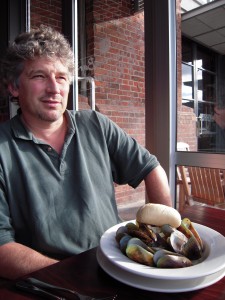Hawke’s Bay District Health Board is investigating four confirmed cases of Paratyphoid fever and is following up three suspect cases.
 All four confirmed cases have required hospital care at Hawke’s Bay Hospital. At least two of the cases ate mussels gathered from Napier’s Ahuriri area. The district health board is also concerned that mussels from the same area, may have been eaten at a Tangi at the Tangoio Marae 11 days ago, and is following that up.
All four confirmed cases have required hospital care at Hawke’s Bay Hospital. At least two of the cases ate mussels gathered from Napier’s Ahuriri area. The district health board is also concerned that mussels from the same area, may have been eaten at a Tangi at the Tangoio Marae 11 days ago, and is following that up.
Medical Officer of Health Nick Jones said, “People with Paratyphoid can carry the (Salmonella Enterica) bacteria in their blood and in their stomach and gut so it is possible for it to be passed on through feces. Hand washing was extremely important to help prevent infecting other people as you can get paratyphoid if you eat or drink things that have been handled by a person who has the bacteria.”

